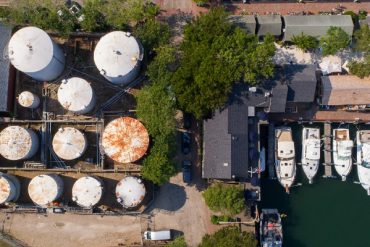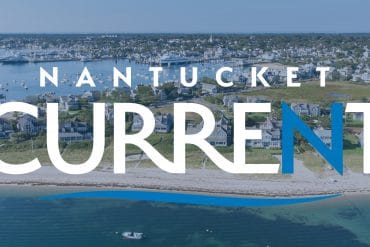How Bob Williams and the Nantucket Pond Coalition are restoring and protecting our ponds.
 Nantucket’s ponds are in peril. Few know this better than Bob Williams. “When we first moved here, we could catch minnows, watch for crabs, take the skiff down to the spit and surf cast,” Williams says while looking out to Hummock Pond from his living room window. “But over the past fifteen years, we’ve seen the pond continue to degrade.” Williams is the president of the Hummock Pond Association, and last year he and a number of island residents founded the Nantucket Pond Coalition, a member-funded nonprofit dedicated to restoring and protecting the island’s many ponds. “This is a long-term issue,” he says. “If nothing is done, these ponds are going to end up as swamps — not in a hundred years, but in thirty.”
Nantucket’s ponds are in peril. Few know this better than Bob Williams. “When we first moved here, we could catch minnows, watch for crabs, take the skiff down to the spit and surf cast,” Williams says while looking out to Hummock Pond from his living room window. “But over the past fifteen years, we’ve seen the pond continue to degrade.” Williams is the president of the Hummock Pond Association, and last year he and a number of island residents founded the Nantucket Pond Coalition, a member-funded nonprofit dedicated to restoring and protecting the island’s many ponds. “This is a long-term issue,” he says. “If nothing is done, these ponds are going to end up as swamps — not in a hundred years, but in thirty.”
All ponds have their own natural evolution and dry up over time, but Williams and his fellow pond protectors aren’t trying to prevent this natural process from occurring. Rather, they are targeting the manmade, anthropogenic effects that are impacting these ponds, specifically nutrient loading and invasive species. The use of fertilizers and the leaching of septic systems have resulted in an excess of phosphorus and nitrogen in the ponds that can cause blue-green algae blooms. Also known as cyanobacteria, the toxins associated with blue-green algae can pose serious health risks, ranging from skin irritation to potentially lethal neurological dysfunctions.
While the science remains inconclusive, some medical professionals are investigating the potential connection between cyanobacteria and cases of Lou Gehrig’ s disease emerging around some ponds in New Hampshire. Thankfully, Dr. Timothy Lepore indicated that there have been no cases of illness connected specifically to the blue-green algae blooms in Nantucket’ s ponds. But humans aren’t the only ones at risk. The toxins associated with blue-green algae are also dangerous for dogs who can be paralyzed or killed if they drink the water. According to Holt Veterinary Services, several dogs have been treated in recent years from illnesses caused by drinking pond water on Nantucket.
 To combat the nutrient loading that causes algae blooms, the Pond Coalition teamed with the Town of Nantucket and the Nantucket Land Council to gain a federal grant to investigate the sources of phosphorus that enter the ponds. “One of the things we’re going to look at this upcoming year is the sediment at the bottom of the pond, which has been accumulating over the years,” explained Emily MacKinnon, the resource ecologist at the Nantucket Land Council who will be conducting the study starting next spring. “If there is a lot of phosphorus at the bottom of the pond, it can basically be re-released under the right conditions and would have to be dealt with differently than if it were coming from surrounding septic systems, for example.” By joining the results of this study with the data already collected on the sources of nitrogen in the ponds, the Coalition hopes to draw up a strategic plan to curb this nutrient loading.
To combat the nutrient loading that causes algae blooms, the Pond Coalition teamed with the Town of Nantucket and the Nantucket Land Council to gain a federal grant to investigate the sources of phosphorus that enter the ponds. “One of the things we’re going to look at this upcoming year is the sediment at the bottom of the pond, which has been accumulating over the years,” explained Emily MacKinnon, the resource ecologist at the Nantucket Land Council who will be conducting the study starting next spring. “If there is a lot of phosphorus at the bottom of the pond, it can basically be re-released under the right conditions and would have to be dealt with differently than if it were coming from surrounding septic systems, for example.” By joining the results of this study with the data already collected on the sources of nitrogen in the ponds, the Coalition hopes to draw up a strategic plan to curb this nutrient loading.
When asked what the average person can do, Williams explains, “You have to make sure your septic system is hydraulically functioning, have it pumped, and understand that’ s part of your responsibility as a homeowner.” Homeowners should also be aware of the type of fertilizer and home cleaning products they use and the amounts in which they use them.
Beyond algae blooms, nutrient loading also causes the ponds’ vegetation to grow rampantly, hindering recreationalists and throwing off the balance of the ponds. This summer, the Pond Coalition teamed up with the town of Nantucket to bring in an aquatic harvester to harvest this excess vegetation from Hummock Pond. The pilot project removed nearly 23,000 pounds of excess vegetation, which was then composted by Bartlett’ s Farm and turned into fertilizer. Williams and the Pond Coalition hope the success of the harvester will lead to similar projects in the island’ s other major ponds. Their next project is to address the Phragmites, an invasive species of reeds that has taken over many of the pond’s shorelines. Each project brings the Coalition closer and closer to returning the ponds to their natural state.
 “Without our Board of Advisors and the Nantucket Town’s support, none of these projects would be possible,” Williams says. Yet even with the great strides they’ve made since their founding last year, Williams and the Pond Coalition are aware that this is an uphill battle. The ponds’ present condition is the result of centuries of human impact, and returning them to their pristine natural state could take decades. But Williams and the Pond Coalition are in it for the long haul. “These brackish, coastal ponds don’t exist anywhere else on the planet, but here in New England and Long Island,” he says. “They’re unique habitats. There are ducks, geese and all kinds of birds migrating to them. Deer drinking. Minnows in the shallows. The sun goes down and the pond sparkles like a necklace. You don’t get that anywhere else. And I think it’s worth protecting.”
“Without our Board of Advisors and the Nantucket Town’s support, none of these projects would be possible,” Williams says. Yet even with the great strides they’ve made since their founding last year, Williams and the Pond Coalition are aware that this is an uphill battle. The ponds’ present condition is the result of centuries of human impact, and returning them to their pristine natural state could take decades. But Williams and the Pond Coalition are in it for the long haul. “These brackish, coastal ponds don’t exist anywhere else on the planet, but here in New England and Long Island,” he says. “They’re unique habitats. There are ducks, geese and all kinds of birds migrating to them. Deer drinking. Minnows in the shallows. The sun goes down and the pond sparkles like a necklace. You don’t get that anywhere else. And I think it’s worth protecting.”
To learn more about the Nantucket Pond Coalition and their efforts, visit NantucketPondCoalition.com.






